The Buck Family and the Ketch ‘Young E.B.’
- Steve Reynolds
- Sep 2, 2025
- 5 min read
Updated: Sep 18, 2025
You may call it just a coincidence, but I call it fate.
I was by chance visiting the anchor memorial by the Australian Naval Association in Port Adelaide this month. It was raining lightly, and I didn’t want any hold ups, but I coincidentally met a man there who went on to tell me his life history.
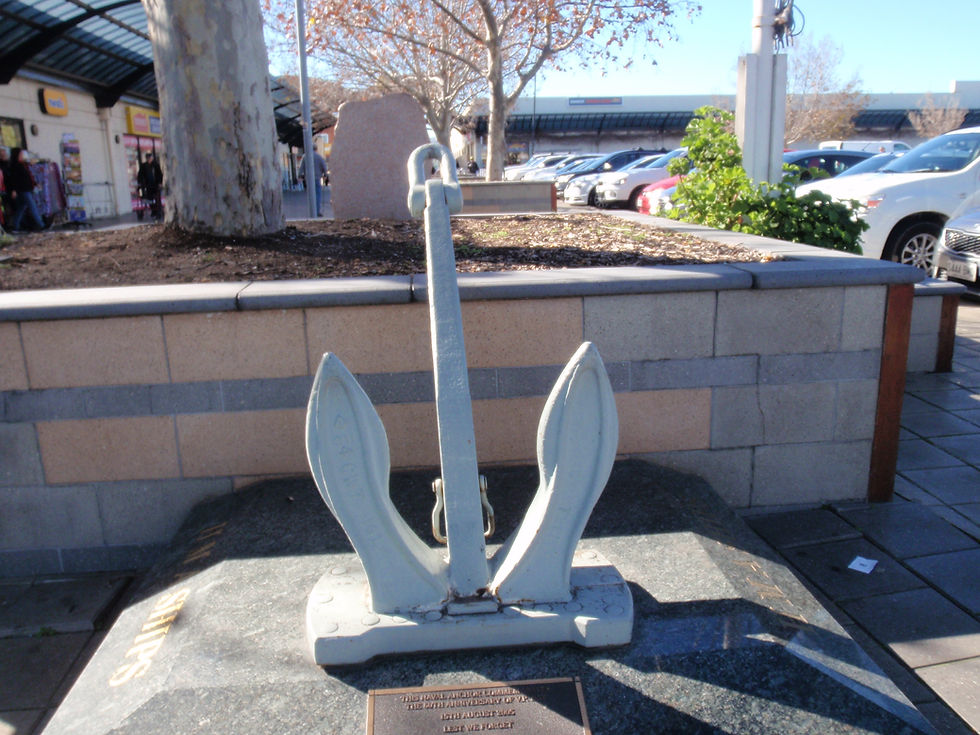
When I say, ‘life history’, I mean that he told me how his ancestors had come to South Australia “on the first ship to come here” (in 1836). My first thought was that he meant HMS Buffalo, but he went on to say that it was Colonel Light’s ship. “Ah, the Rapid, I added. “Yes,” he agreed. We discussed his ancestors in more detail, something that inspired me a bit, just when I needed a little inspiration.
He was talking about the Buck family, who I had heard about before. I then went home and did a little more research about the Buck family. This is where another coincidence occurred. I had been in discussions with a friend who had told me about him having seen a shipwreck at Marino.
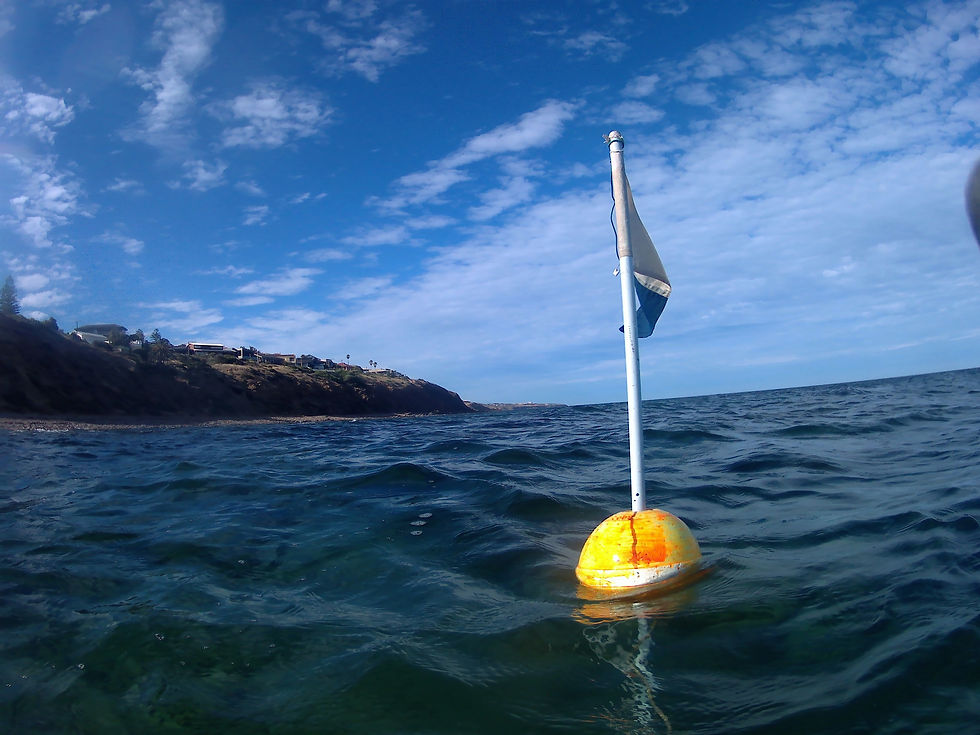
My research on the wreck suggested that it could possibly have been the 1888 wreck of the Young E.B. . Further research suggested that the wreck had been built by one of the Buck family, a William Henry Buck.
Although I thought that this finding was a remarkable coincidence, I call it fate because it was meant to be that I learnt more about the Buck family and the wreck.
I found that Robert Buck snr. and his son Robert Buck jnr. Had both been members of the crew of the Rapid. Buck snr. had been the cook on the voyage to South Australia in 1836.
It seems that Robert Buck eventually* settled in South Australia. He and his wife had four sons, including Robert Buck jnr. and William Henry Buck, and 3 daughters.
* (Although Kangaroo Island Pioneers Association - Buck, Robert says of Robert Buck "Immigration: 20 Aug 1836, Rapid".)
Robert Buck was described as “master mariner, late of Port Adelaide, aged 84 years. A colonist of 36 years” at the time of his death “at Lefevre's Peninsula” on 7th October 1872. He was buried in Alberton Cemetery (now known as Pioneer Park at the end of Parker Street, at St Paul's Church, Alberton.
According to https://www.portadelaide.org/alberton-burial-list/ , the “Funeral procession departed (the) residence of his daughter, near (the) Exmouth Hotel, Lefevre Peninsula, for Alberton Cemetery, Wednesday afternoon 9 October”.
According to the “Evening Journal” of 8th October 1872, Robert Buck (jnr.) “17 October 1819 - 12 July 1895 (died at) at Wallaroo, SA.” He was “Born Deptford, Kent, England”.
Robert’ snr’s son William is said to have built a wooden ketch called Young E.B. in Port Adelaide with a W. Russell in 1882.
According to https://sahistoryhub.history.sa.gov.au/subjects/william-russell-pty-ltd/ , William Russell “moved his business to a small shed on Commercial Road (Port Adelaide) next door to the Exchange Hotel (today’s Lighthouse Hotel). By the early 1880s, he was also engaged in coastal trade, and co-owned the ketches Young E.B., Crest of the Wave, Spindrift, Gambier Lass, Capella and Elizabeth Annie.
According to https://passengers.history.sa.gov.au/node/939598 , the ketch Young E.B. met its final demise on 30th July* 1888 – “Driven ashore near Marino Rocks, south of Port Adelaide in a gale and by the time attempts were made to save her she had broken up.' 1912: Register closed**.
* (Or possibly 30th June that year according to “Shipwrecks of South Australia - Book Two, 1876-1899” by Ronald Parsons. “Ketches of South Australia” by Ronald Parsons, however, still says 30th July.)
** (Her Customs Register was not closed until 1912 according to “Ketches of South Australia” by Ronald Parsons.)
Both Shipwrecks of South Australia - Book Two, 1876-1899” and “Ketches of South Australia” by Ronald Parsons give further details, including tonnage, dimensions, design and the storm that led to the wrecking, a heavy, north-west gale on 30th July that drove the vessel ashore onto rocks. The small steamer Defiance went to its assistance, but it was already breaking up by the time that they arrived there.
According to https://passengers.history.sa.gov.au/node/924177 , the Defiance was a “Screw Steamer, 25 hp. Built in 1881 in Brisbane Water, NSW. Tonnage 64g, 44n”. It was owned and registered as follows: -
“J.Halstead, reg. Sydney. 1882: Robert Hayes. 1883: Charles Jeanneret. 1889 Mar.: W.R.Cave & Co., reg. Port Adelaide. 1899 Mar.: The Adelaide Steam Tug Co. 1930.” Its register was then closed, and it was broken up.
https://passengers.history.sa.gov.au/node/924177 says that the South Australian Maritime Museum has this image of the Defiance taken beside the Largs Pier (with the Largs Pier hotel in the background).: -
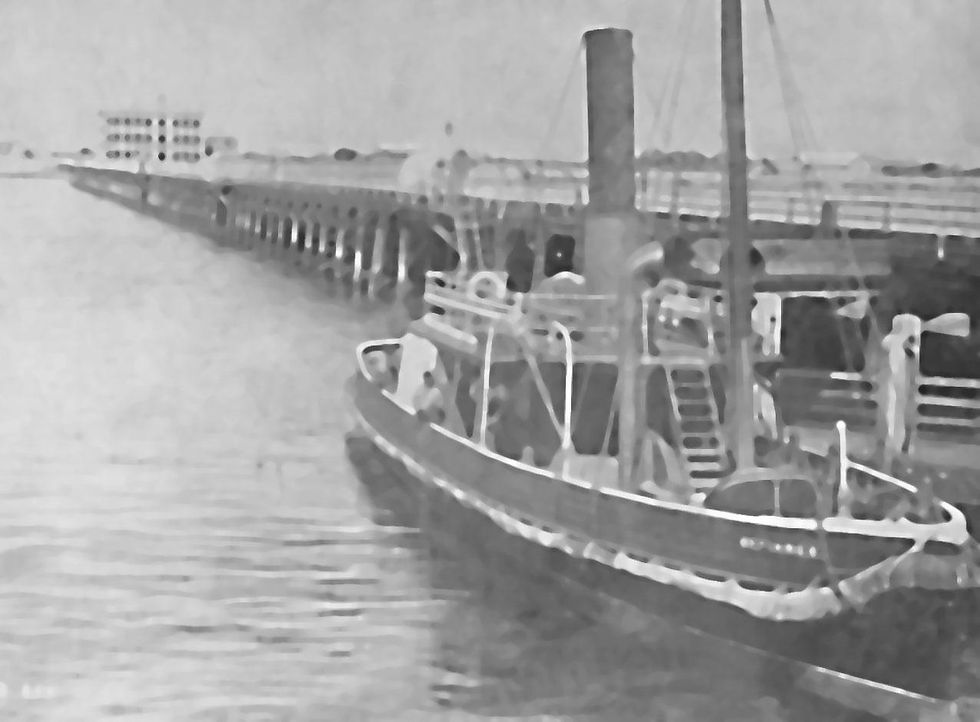
(Photo courtesy of the South Australian Maritime Museum
Copies of the photo may also be found at the Largs Pier hotel and the kiosk at the Largs jetty.
I could be wrong, but there is every chance that William Buck named the ketch the Young E.B. in 1882 fafter his wife Elizabeth who he married in 1849. E.B. could also possibly stand for Eliza-Beth. Or E.B. could be for either his mother Elizabeth Buck, or his sister Elizabeth Buck. There might even be other Elizabeth Bucks in the family.
According to https://www.wikitree.com/wiki/Buck-2557 , “William Henry Buck (1822 - 1906), Born 15 Nov 1822 in Surrey, England, Died 12 Jun 1906 at age 83 in Point Marsden, Kangaroo Island, South Australia. ….. Husband of Elizabeth (Hannon) Buck — married 13 Feb 1849 in Adelaide, South Australia, Australia. Father of Samuel William (&) James Buck.”
According to https://passengers.history.sa.gov.au/node/939598 , the Young E.B.’s dimensions were 48.2 x 14.7 x 5.0 feet. Mind you, my friend described his sighting as “a (10 metre?) iron frame wreck of a boat off of Marino. The wreck was about 150-300m offshore about 250m South of the boat ramp.”
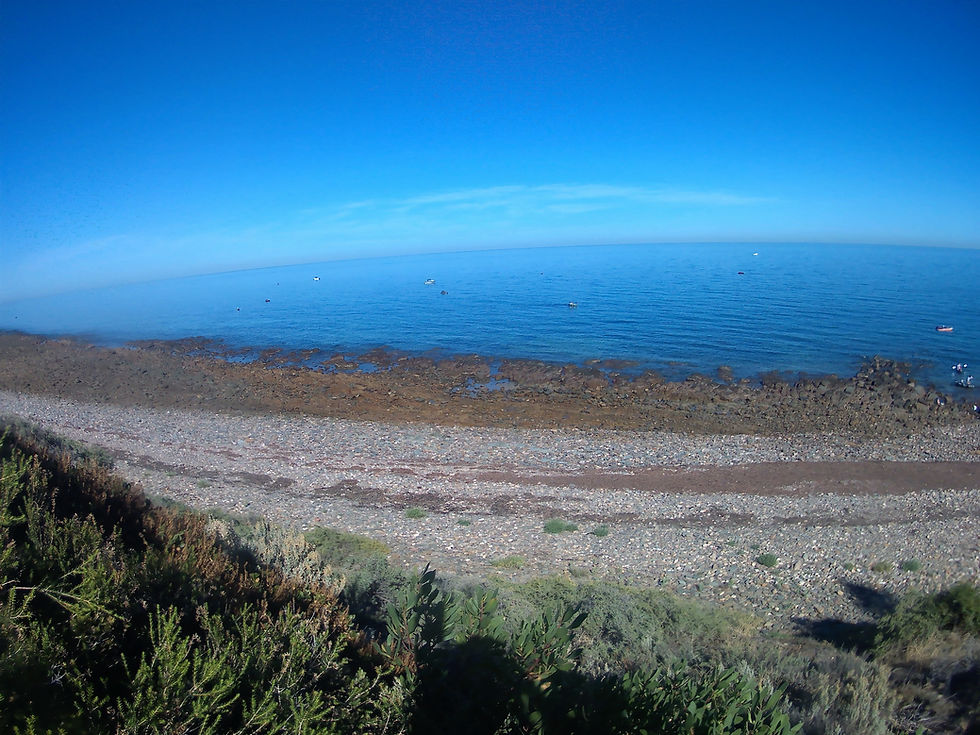
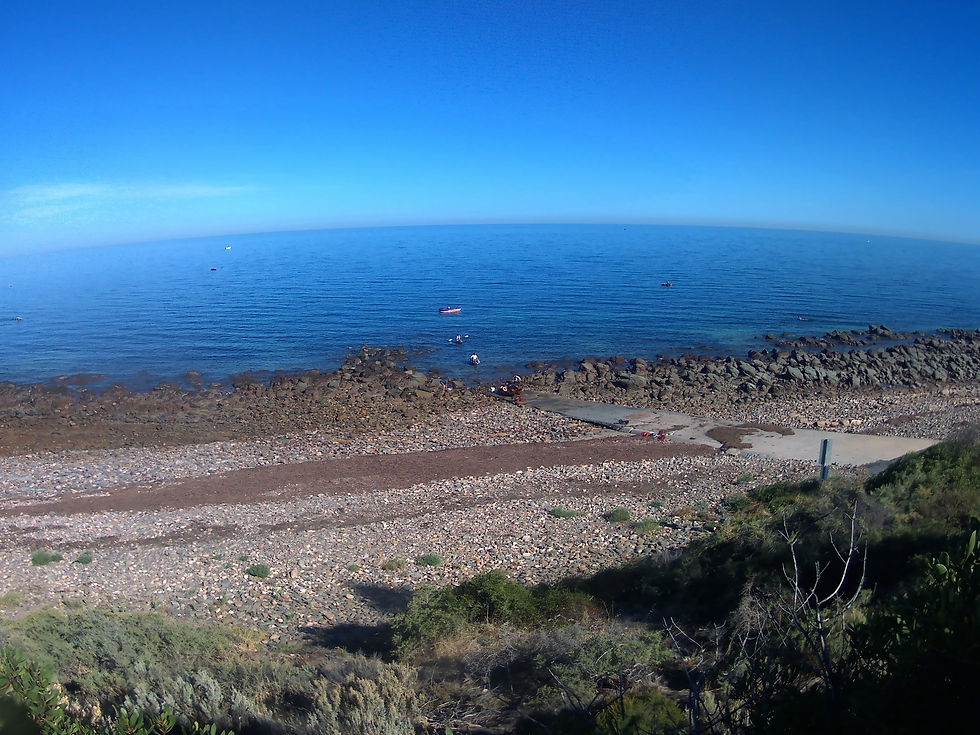
The man that I met up with at the anchor in Port Adelaide told me that Buck’s Flat was named after the Buck family. I didn’t recall hearing about Buck’s Flat at all. According to https://www.portadelaidefc.com.au/news/1576062/alberton-oval , “Buck's Flat surrounding Glanville Hall was sold at auction and sub-divided for residential development.”
UPDATE 18/9/25
Garry Keywood tells me that Buck's Flat was "Hawkers Creek – Glanville Area".
He also sent me this information about Captain Robert Buck having been the Harbour Master at Port Elliot: -
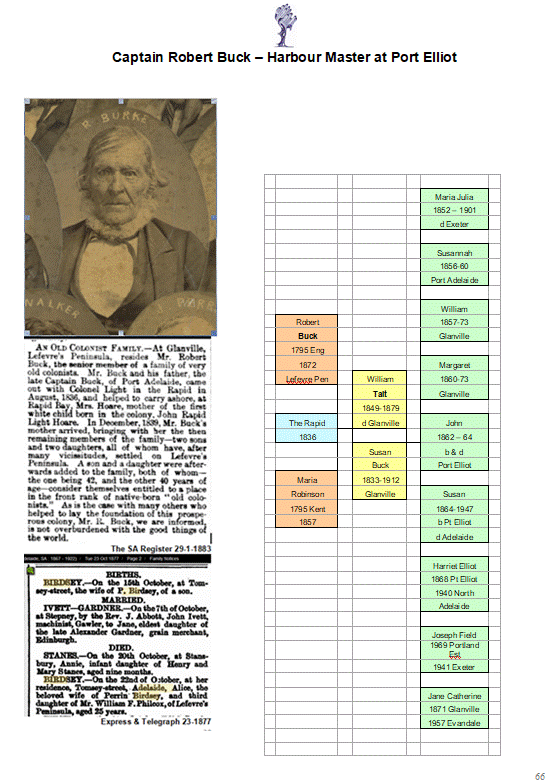
Note that Captain Robert Buck is said to have lived from 1795 to 1872. He married Maria Robinson from Kent in 1857. Their daughter Susan married William Tait. It seems that they had some 9 children together.
Garryalso added these details: -

Thanks to Garry for his assistance.




Comments